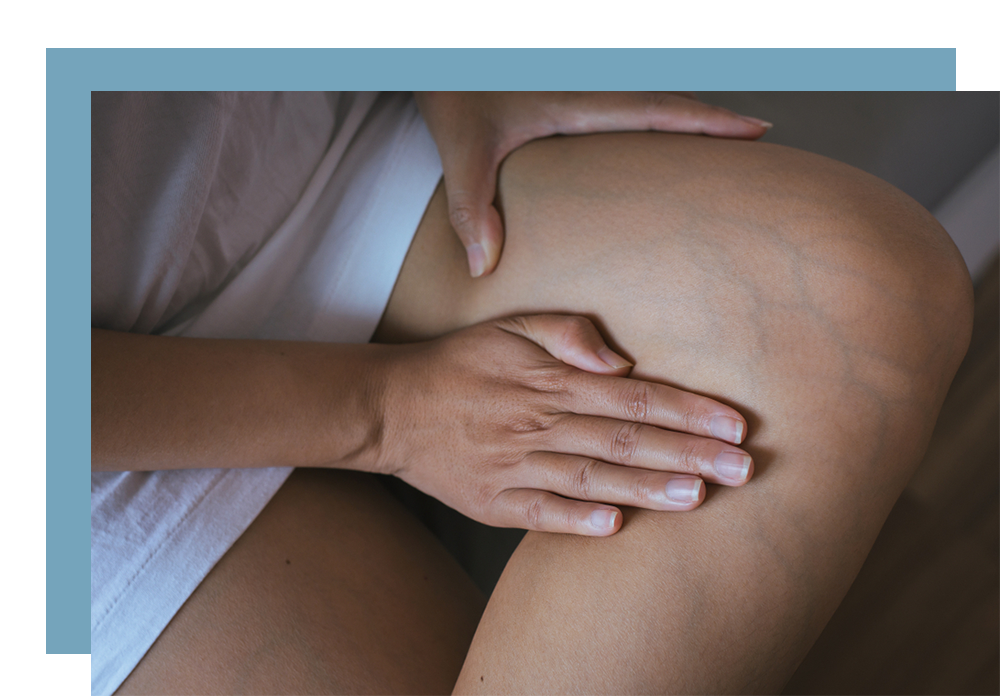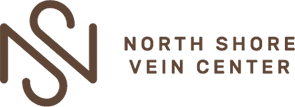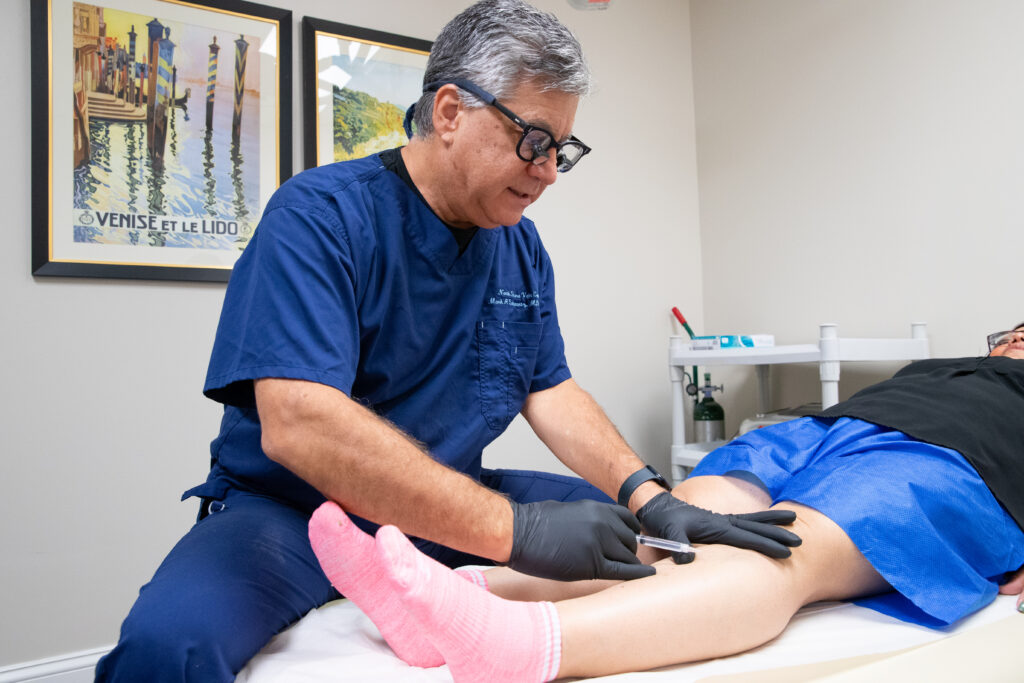
Varicose veins are swollen superficial veins without the ability to transport blood effectively. If unsightly varicose veins are causing you problems, Mark Schwartz, MD, FACS, RPVI, of North Shore Vein Center in New Hyde Park, New York, provides the most advanced forms of treatment for removing these veins. Call North Shore Vein Center today to find out more.
Varicose Veins Q&A
What are varicose veins?
Varicose veins are enlarged, twisted veins that are often dark blue and near or raised above the surface of your skin. Varicose veins can be a symptom of an underlying problem with your circulation called venous insufficiency.
In healthy veins, there are one-way valves that direct the flow of venous blood upward and inward. Blood collects in the small, superficial veins and passes into your larger veins. The blood eventually flows through the valves into deeper veins and then to your heart and lungs.
If one or more of the valves in your veins fail to function correctly, blood can flow down your leg in the wrong direction. The blood then overfills and distends the branches of the superficial veins under your skin.
Over time, these veins begin to stretch, bulge and become more visible. These swollen or prominent veins are called varicose veins.
Varicose veins affect around 30% of the population in the United States (70% being female and 30% male). Approximately 90% of all blood volume travels via the deep venous system and the normal channels, so any varicose veins you have aren’t effectively contributing to your overall circulation.
What are the symptoms of varicose veins?
Symptoms of varicose veins can include:
- Aching
- Fatigue
- Heaviness
- Burning
- Throbbing
- Itching
- Cramping
- Ankle swelling
- Ulceration
The causes of varicose veins include obesity, prolonged standing, heredity, pregnancy, and hormonal influences. Varicose veins are typically progressive, meaning that in the majority of cases, they get worse over time.
Severe varicose veins that don’t receive treatment can ultimately lead to skin discoloration and eczema-type symptoms, chronic leg swelling, skin thickening, and even ulcerations that won’t heal.
How are varicose veins treated?
Dr. Schwartz at North Shore Vein Center provides the most advanced, up-to-date treatments for varicose veins, allowing him to serve you better and more comfortably.
Previously, patients had to go to the hospital for a painful varicose vein stripping procedure. Now, you can receive treatment in-office at North Shore Vein Center under local anesthesia with little to no discomfort.
Treatments include:
Endovenous laser ablation (EVLA)
Dr. Schwartz inserts a laser fiber into the diseased vein which, once turned on, heats the inside of the vein to seal it shut. Endovenous laser ablation takes the place of traditional vein stripping.
The procedure typically takes around 45 minutes, and provides the most comfortable laser treatment available, with rapid relief of symptoms, no downtime, and less bruising.
Ambulatory phlebectomy
Also known as “hook” phlebectomy, this procedure involves the micro-extraction of bulging varicose veins through very small incisions. These small incisions usually heal completely without any scarring.
Dr. Schwartz carries out ambulatory phlebectomy in-office under local anesthesia. The process usually takes about 30-60 minutes and requires little to no time off work. Immediately after this procedure, you need to wear a compression stocking.
Foam sclerotherapy
Foam sclerotherapy uses a foamed solution similar to the solution used in traditional sclerotherapy. By mixing the solution with air or another type of gas using mechanical pumps, the solution is given a greater surface area, making it more successful in thickening the blood vessel wall and sealing off blood flow.
The foam solution doesn’t mix with the blood, as is the case with the liquid solution. Instead, it actually displaces the blood, which prevents dilution of the solution.
Ultrasound-guided sclerotherapy
This varicose vein removal procedure treats varicose veins that are below the skin’s surface. Dr. Schwartz injects an FDA-approved medication into the diseased veins using ultrasound technology to guide the placement.
This ensures that the drug is placed accurately into the vein. Ultrasound-guided sclerotherapy requires no anesthesia or sedation, and you can return to work immediately.
Conservative therapy
Prescription-strength compression stockings are the most conservative way to treat vein disease. Compression stockings help lessen the symptoms caused by varicose veins, but they don’t treat the underlying problem. These stockings must be worn on a daily basis indefinitely since they do nothing to address the venous disease.
Find out more about the latest approaches to varicose vein removal by calling North Shore Vein Center today.

